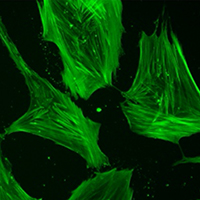Benzo[a]pyrene impairs the migratory pattern of human gonadotropin-releasing-hormone-secreting neuroblasts

Accepted: 27 July 2021
HTML: 8
All claims expressed in this article are solely those of the authors and do not necessarily represent those of their affiliated organizations, or those of the publisher, the editors and the reviewers. Any product that may be evaluated in this article or claim that may be made by its manufacturer is not guaranteed or endorsed by the publisher.
Authors
Benzo[a]pyrene (BaP) is a widespread pollutant that can act as an endocrine disrupting compound (EDC) and interferes with reproductive function. The central regulatory network of the reproductive system is mediated by gonadotropin-releasing hormone (GnRH) neurons, which originate in the olfactory placode and, during ontogenesis, migrate into the hypothalamus. Given the importance of the migratory process for GnRH neuron maturation, we investigated the effect of BaP (10 µM for 24 h) on GnRH neuroblasts isolated from the human fetal olfactory epithelium (FNCB4). BaP exposure significantly reduced the mRNA level of genes implicated in FNCB4 cell migration and affected their migratory ability. Our findings demonstrate that BaP may interfere with the central neuronal network controlling human reproduction affecting GnRH neuron maturation.
How to Cite
PAGEPress has chosen to apply the Creative Commons Attribution NonCommercial 4.0 International License (CC BY-NC 4.0) to all manuscripts to be published.

 https://doi.org/10.4081/ejh.2021.3282
https://doi.org/10.4081/ejh.2021.3282






